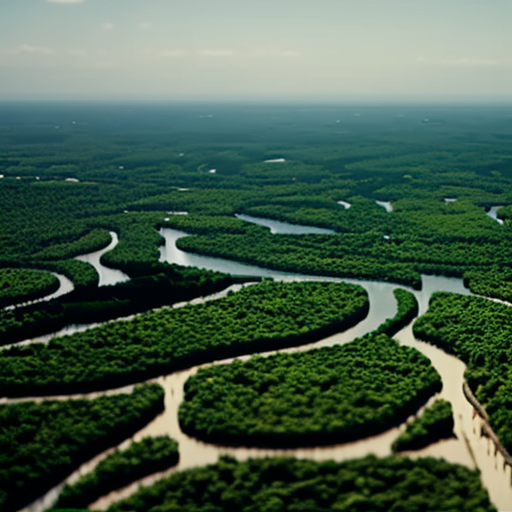Governments must meet their biodiversity pledges
Governments must meet their biodiversity pledges Jordan Times


Africa’s Biodiversity Powerhouse: A Call for Action on Sustainable Development Goals
MONROVIA — My work has taken me far and wide, across oceans and vast expanses of land, and I have been lucky enough to see firsthand some of the richest biodiversity hotspots on Earth. But at the end of the day, I always return home, to Liberia, to Africa, which offers the most extraordinary natural landscape and wildlife. The African continent is undoubtedly the planet’s biodiversity powerhouse.
Africa’s Natural Capital
Writing about Africa’s natural capital does not do it justice. How can one describe a quarter of global biodiversity, including at least 50,000 plant species, some 1,000 different mammals, 2,500 types of bird, and up to 5,500 varieties of freshwater fish, in a few words? It is the same with Liberia: my country is home to large swaths of the Upper Guinean Forests, which is among the world’s foremost regions for mammalian diversity. It includes hundreds of thousands of hectares of freshwater wetlands and over 6 million hectares of forests, which are vital for the survival of endangered fauna and flora, as well as for local communities’ well-being.
The Impact of Biodiversity Collapse
Given its abundance of natural capital, the continent stands to lose disproportionately from biodiversity collapse. When human activity pushes animal and plant species close to extinction and throws ecosystems out of balance, it also puts important valuable natural resources at risk: Africa’s diverse biomes play a crucial role in global pharmaceutical innovation, ecotourism and crop pollination.
The Disproportionate Impact of Climate Change on Africa
Moreover, despite contributing only 3 per cent to global greenhouse-gas emissions, Africa suffers disproportionately from the effects of a warming planet, losing up to $15 billion per year to climate change. Biodiversity loss exacerbates the problem by threatening the continent’s rainforests, an important carbon sink. And, given African economies’ dependence on natural resources and ecosystem services, it also impedes growth and development.
Africa’s Leadership in Conservation Efforts
That is why Africa has been at the forefront of biodiversity conservation efforts, and climate action more generally. The continent is increasingly calling attention to the issue and leading the charge at negotiations, most recently at December’s United Nations Biodiversity Conference (COP15) in Montreal. Several African states, including Liberia, have also held developed countries accountable for their existing commitments at these international summits.
The Kunming-Montreal Global Biodiversity Framework
The talks at COP15 were ultimately successful, culminating in the adoption of the historic Kunming-Montreal Global Biodiversity Framework. One of its many ambitious targets is to protect 30 per cent of the world’s land and oceans by 2030. Also called “30×30”, it is a proposal that many in Liberia, including me, as a member of the Campaign for Nature’s Global Steering Committee, have long championed. Governments also committed to increase the annual biodiversity-related financing that developed countries provide to developing countries to at least $20 billion by 2025, and at least $30 billion by 2030.
From Agreement to Action: Build Back Biodiversity
Six months after this landmark agreement, we need to maintain momentum and make good on these pledges. As the staggering decline in nature and wildlife continues unabated, now is not the time to falter. The theme of this year’s International Day for Biological Diversity (celebrated each year on May 22), “From Agreement to Action: Build Back Biodiversity”, is a timely and powerful reminder of the urgent need to act quickly on the commitments made at COP15 and to shift our focus and energy from imagination to implementation. The recent G-7 Summit in Hiroshima, where world leaders reaffirmed their commitment to the Kunming-Montreal framework, was a welcome step in the right direction.
Mobilizing Public Finance for Biodiversity Conservation
But governments must deliver on their pledges to mobilise public finance if we want to achieve the “30×30” goal of halting and reversing biodiversity loss. The funding will provide a lifeline for the world’s ecosystems and plant and animal species, as well as some of the world’s most vulnerable populations, particularly indigenous peoples and rural communities, whose livelihoods depend on their local natural capital.
Keeping Promises for International Financing
The global community has a history of breaking its word and shifting the goalposts agreed to in past climate and biodiversity deals. But the promise to increase international financing to developing countries must be kept. As global warming intensifies, we can no longer tolerate the repercussions of another deal like the one reached at the 2009 UN climate summit, which turned out to be mostly hot air.
The Opportunity to Preserve the Planet’s Natural Wealth
World leaders have an opportunity to be on the right side of history. But any delay in meeting the targets set at COP15 will undermine this landmark agreement. The resources are there. After rapidly mobilising trillions of dollars in response to the COVID-19 pandemic, developed countries should be able to move with the same speed to finance biodiversity conservation efforts. Their investments would yield significant dividends in developing countries, from supporting millions of jobs and generating billions of dollars in GDP to significantly reducing greenhouse-gas emissions.
The moment has come for decision-makers at all levels in developed countries to deliver their end of the bargain. Let us not waste this last chance to preserve the planet’s natural wealth. If we can get this right, Africa, and the world, will be better for it.
Ellen Johnson Sirleaf, a former president of Liberia, is a member of the Campaign for Nature’s Global Steering Committee. Copyright: Project Syndicate, 2023.
SDGs, Targets, and Indicators Analysis
1. Which SDGs are addressed or connected to the issues highlighted in the article?
- SDG 13: Climate Action
- SDG 14: Life Below Water
- SDG 15: Life on Land
The article discusses the impact of biodiversity loss and climate change on Africa’s natural capital. It highlights the importance of protecting ecosystems, forests, and oceans, which are directly connected to SDG 13 (Climate Action), SDG 14 (Life Below Water), and SDG 15 (Life on Land).
2. What specific targets under those SDGs can be identified based on the article’s content?
- Target 13.2: Integrate climate change measures into national policies, strategies, and planning.
- Target 14.2: Sustainably manage and protect marine and coastal ecosystems to avoid significant adverse impacts.
- Target 15.1: Ensure conservation, restoration, and sustainable use of terrestrial and inland freshwater ecosystems.
The article emphasizes the need for integrating climate change measures into national policies (Target 13.2), sustainably managing marine and coastal ecosystems (Target 14.2), and ensuring the conservation and sustainable use of terrestrial and inland freshwater ecosystems (Target 15.1).
3. Are there any indicators mentioned or implied in the article that can be used to measure progress towards the identified targets?
- Indicator 13.2.1: Number of countries that have integrated climate change measures into national policies, strategies, and planning.
- Indicator 14.2.1: Proportion of national exclusive economic zones managed using ecosystem-based approaches.
- Indicator 15.1.1: Forest area as a proportion of total land area.
The article does not explicitly mention indicators, but it implies the need to measure the number of countries that have integrated climate change measures into national policies (Indicator 13.2.1), the proportion of national exclusive economic zones managed using ecosystem-based approaches (Indicator 14.2.1), and the forest area as a proportion of total land area (Indicator 15.1.1).
Table: SDGs, Targets, and Indicators
| SDGs | Targets | Indicators |
|---|---|---|
| SDG 13: Climate Action | Target 13.2: Integrate climate change measures into national policies, strategies, and planning. | Indicator 13.2.1: Number of countries that have integrated climate change measures into national policies, strategies, and planning. |
| SDG 14: Life Below Water | Target 14.2: Sustainably manage and protect marine and coastal ecosystems to avoid significant adverse impacts. | Indicator 14.2.1: Proportion of national exclusive economic zones managed using ecosystem-based approaches. |
| SDG 15: Life on Land | Target 15.1: Ensure conservation, restoration, and sustainable use of terrestrial and inland freshwater ecosystems. | Indicator 15.1.1: Forest area as a proportion of total land area. |
Behold! This splendid article springs forth from the wellspring of knowledge, shaped by a wondrous proprietary AI technology that delved into a vast ocean of data, illuminating the path towards the Sustainable Development Goals. Remember that all rights are reserved by SDG Investors LLC, empowering us to champion progress together.
Source: jordantimes.com

Join us, as fellow seekers of change, on a transformative journey at https://sdgtalks.ai/welcome, where you can become a member and actively contribute to shaping a brighter future.







